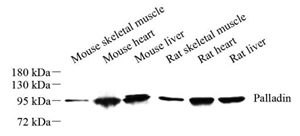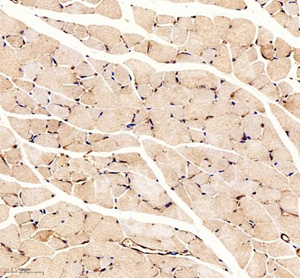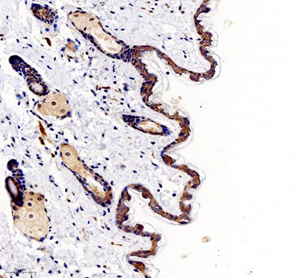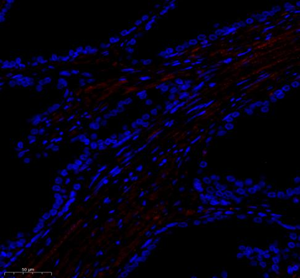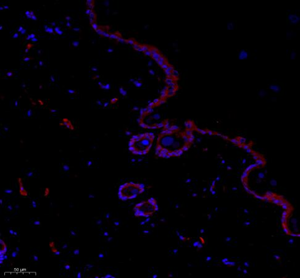Anti-Palladin Rabbit pAb (100 μl)
| Reactivity: | M,R & H,M,R |
| Applications: | WB & IHC/IF |
| Host Species: | Rabbit |
| Clonality: | Polyclonal |
| Full Name: | Palladin rabbit polyclonal antibody |
Gene Name: | Palladin |
Synonyms: | Palld, PALLD, CGI-151, CGI151, MYN, PNCA1, SIH002, palladin, cytoskeletal associated protein |
Immunogen: | Recombinant protein corresponding to Mouse Palladin |
Isotype: | IgG |
Purity: | Affinity purification |
Subcellular location: | Cytoplasm |
Predicted MW. | 108 kDa |
Observed MW. | 108 kDa |
Uniprot ID: | Q9ET54 |
Product Usage Information
Applications | Species | Dilution | Positive Sample |
WB | Mouse, Rat | 1: 1000-1: 1500 | skeletal muscle, heart, liver |
IHC/IF | Human, Mouse, Rat | 1: 250-1: 2000 | prostate, skeletal muscle, skin |
Background
Palladin is a protein encoded by the PALLD gene. Palladin is a component of actin-containing microfilaments that control cell shape, adhesion, and contraction. Palladin's precise biological role is poorly understood, but it has been shown to play a role in cytoskeletal organization, embryonic development, cell motility, scar formation in the skin, and nerve cell development.
Images
|
|
Western blot analysis of palladin (GB11926) at dilution of 1: 1000 |
|
|
Immunohistochemistry of paraffin embedded mouse skeletal muscle using Palladin (GB11926) at dilution of 1: 1000 (250x lens) |
|
|
Immunohistochemistry of paraffin embedded mouse skin using Palladin (GB11926) at dilution of 1: 1000 (200x lens) |
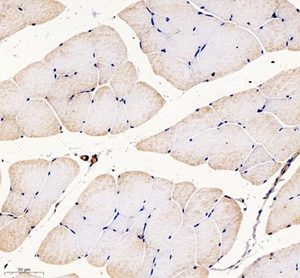 | Immunohistochemistry of paraffin embedded rat skeletal muscle using Palladin (GB11926) at dilution of 1: 1000 (250x lens) |
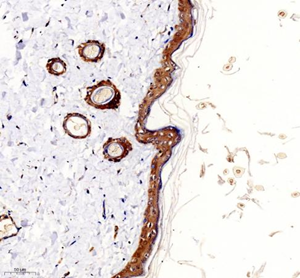 | Immunohistochemistry of paraffin embedded rat skin using Palladin (GB11926) at dilution of 1: 1000 (200x lens) |
|
|
Immunofluorescence of paraffin embedded human prostate using paldadin (GB11926) at dilution of 1: 500 (300x lens) |
|
|
Immunofluorescence of paraffin embedded rat skin using paldadin (GB11926) at dilution of 1: 500 (200x lens) |
Storage
| Storage | Store at -20°C for one year. Avoid repeated freeze/ thaw cycles. |
| Storage Buffer | PBS with 0.02% sodium azide, 100 μg/ml BSA and 50% glycerol. |

